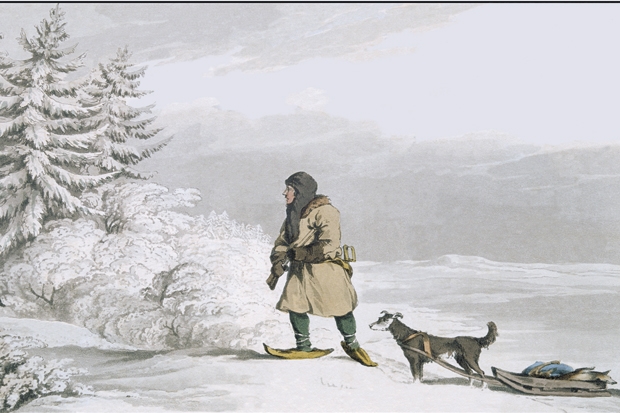Larger than Europe and the United States combined, Siberia is an enormous swathe of Russia, spanning seven time zones and occuping 77 per cent of the country’s land mass. Ryszard Kapuscinski describes the gulags which were placed there as being amongst the greatest nightmares of the 20th century — and that image of suffering has tarnished the region irrevocably.
In her masterful study of Siberia’s people, Janet M. Hartley, professor of international history at the London School of Economics and Political Science, argues that this has not only been a place of torture and starvation. While it has certainly endured miserable times, and is likely to suffer many more, it should be considered a frontier land, comparable in some ways to America.
The Cossack who won a resounding early victory there was Ermak — a warrior depicted today as a Russian Christopher Columbus and nationalist folk hero. According to Hartley, Ermak was really a ne’er-do-well, employed as a mercenary by the Stroganovs to defeat Kuchum Khan of Sibir. Their family business interests in the Urals had frequently been interrupted by Kuchum, who had also angered Ivan IV by refusing to provide him with furs
So, with the tsar’s blessing, in 1582 Ermak blazed a bloody trail through one of the Mongol empire’s last outposts. The Russian conquistadors who had gained control of Siberia by the end of the 17th century continued to murder and enslave the natives. While Hartley cites some examples of co-operation between locals and colonisers — particularly in her remarkable study of life in a Siberian military garrison — the settlers for the most part considered the indigenous people lowlier even than serfs.
But the exile of such distinguished dissidents as the Decembrists, who led the failed 1825 rebellion again Nicholas I, brought many liberals to Siberia. Those who survived forced labour, and stayed, eschewed the class system, founding theatres and academies. As Orlando Figes has noted, they even befriended the peasants, and defied convention by ceasing to trim their own beards.
The Decembrists were not living a pastoral fantasy in Siberia, and were often held in high regard by the local people. Only in a land free of a class system could liberal beliefs flourish, and they were subsequently revered as martyrs in the October Revolution of 1917.
Although Hartley naturally covers the forced famines and gulags of the Stalinist era, the most interesting parts of her book focus on the obscurer aspects of Siberia’s history. One recurring paradox is the idea of the east as a land of plenty. Soviet women in the 1960s were attracted there by new model housing developments. Now these lie derelict and abandoned; but some who came to Siberia of their free will still show a certain pioneering resolve. One railway worker, when asked about his job, explains that he is simply ‘continuing Ermak’s work’.
Hartley’s skill lies in her ability to make historical events vivid and accessible. She does not assume that we all know who the Decembrists were, or why Stalin hated the kulaks, but provides short descriptions of such groups to fill out her meticulous examination of primary sources. This will open her scholarship to a younger audience who have no preconceptions about Siberia.
Its history is of course extremely harrowing, just as any history of colonisation can be. Nevertheless, the region’s economic potential is dazzling, as Hartley explains in her closing passages. Her book deserves to be read by all, alongside Solzhenitsyn’s The Gulag Archipelago and Dostoevsky’s The House of the Dead. But it would be particularly useful to a generation of young Siberians, eager to understand their wild region’s extraordinary past.
Available from the Spectator Bookshop, £21.50. Tel: 08430 600033. Will Nicoll was twice shortlisted for the Shiva Naipaul Memorial prize.






Comments